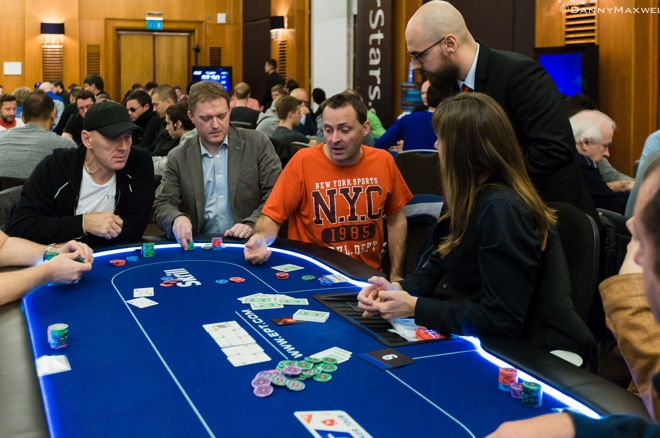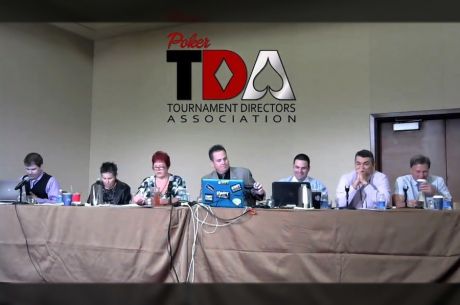Three Lesser-Known Poker Rules You Can Use to Your Advantage

On July 24, 1983, with two outs in the top of the ninth inning, George Brett of the Kansas City Royals hit a home run against the New York Yankees. With a man on base, it moved the score from 4-3 Yankees to 5-4 Royals.
But it actually turned into what one wag called baseball's only "game-losing home run," when Billy Martin, manager of the Yankees, pointed out to the umpire that Brett's grip-enhancing pine tar had been applied illegally far above the end of the bat. The umpire ruled, correctly, that that discovery nullified the home run. Furthermore, the rule book specified that the penalty for hitting with an illegal bat was to have the batter ruled "out," and thus the game ended with Brett as the third out for his team.
As for Brett �� well, let's just say he was not happy with the call. (Look up the video online if you've never seen it.)
In a highly controversial ruling, the umpire's correct decision was later overturned on appeal to the American League president, Lee MacPhail. But don't let that bit of history undermine the point I'm making here, which is this �� Martin had known for a long time that Brett was habitually using an illegal amount of pine tar on his bat, but he didn't point it out to the umpires until a situation arose in which he could gain a huge advantage by doing so.
poker
At the 2000 Solheim Cup �� the women's equivalent of the Ryder Cup �� a similar controversy arose when, at a crucial moment, the American team called for a penalty on the European team.
The team whose ball is farther from the hole is supposed to go first, but Annika Sorenstam, playing for Europe, misjudged the distances, took her chip shot out of turn from about 25 feet, and made it. The Americans protested to officials that they were supposed to go first, because their ball was about two feet farther from the hole. Sorenstam's shot was nullified. When she missed the second time, it turned the hole from a win to a loss for her team. The U.S. team was criticized in some circles for not just letting the mistake go, as they could have done, but the rules clearly entitled them to their protest and remedy.
Poker, too, has some lesser-known and/or infrequently-evoked rules that, in certain situations, can be deployed for tactical advantage. Let's talk about three of them.
1. Tap, tap, tap
Playing a $1/$2 no-limit hold'em game in Vegas once, I was dealt A?Jx. There was a pre-flop raise to $15 or so, which I called, along with six other people, so it was already a big pot before the flop.
The flop came all spades, giving me the nut-flush draw. A player a few seats to my right was supposed to act first. He tapped his hand on the table, and I couldn't tell if it was a "just thinking" tap, as is seen so commonly among low-limit players, or if it represented a check. Just as he reached for his whole stack �� about $200 �� to put it in the pot, the dealer asked, "Was that a check?"
Now, I certainly didn't want him going all in, because I couldn't possibly call such a large bet in the hope of catching another spade. I wanted a free card badly. The player said, "No, I'm all in!" I spoke up and said, "It looked like a check to me." The dealer agreed, and made him take his bet back. Everybody else checked, too.
The turn card was another spade, giving me the nuts. The other player still moved all in. I called, of course. He had flopped a set of nines, so it's understandable he wanted to make a prohibitively large bet on the flop. What was presumably just an unconscious, nervous tapping motion of his hand ended up costing him that $200, plus the pot he could have won.
There is no one official, universally recognized poker rule book. But I often like the thoughtfulness and wording of Roy Cooke's Real Rules of Poker. He specifically addresses this point: "The dealer and other players shall have the right to rely on a player's hand motions. Any tapping of the table or other hand signal that the dealer might reasonably construe to be a check shall be deemed a check."
That's as it should be. We can't be expected to read other players' minds, and if you always have to stop and ask whether a hand signal is intentional or not, then there's no point in even allowing hand signals.
What I would do differently now �� and, in fact, have done several times in similar situations �� is to verbalize my "check" loudly and clearly as soon as the ambiguous tapping takes place. That makes it clear to everybody that I have interpreted the other player's gesture as a check, and I am then checking in turn. That strengthens my case should he object that he intended to bet, because it's unfair that he should be able to change his mind after I have made my action known.
2. Protect your cards
In a small tournament once, I was one of the last three players left. I was on the button and raised as the first to act. The small blind folded. The big blind, after looking at his cards, put them back down on the table somewhat forward of where they had been �� with no card protector.
The dealer interpreted this as a fold, and, quick as a wink, scooped them into the muck with the first player's discards, dropped the rest of the deck on top of them, and pushed me the two blinds. The player in the big blind protested that he had intended to call my raise, but it was too late.
The small controversy here is that as the player got increasingly angry, the dealer looked at me with what looked like begging in his eyes. I probably could have placated the other player by either giving him back his big blind and keeping just the small, or by agreeing to a "do over" of the whole hand. But this guy had been a jerk at every opportunity, so I wasn't feeling inclined to cut him any slack. The dealer called for the tournament director, but he was tied up for several minutes. Finally the other player got tired of waiting for a ruling, angrily conceded the chips, and let the game go on.
On this point, the various sets of poker rules are in agreement. As just one example, the 2015 Poker Tournament Directors Association rules say, "A player must protect his hand at all times��. If the dealer kills a hand by mistake or if in TD's judgement a hand is fouled and cannot be identified to 100% certainty, the player has no redress and is not entitled to a refund of called bets."
3. Showdown
Most players understand that if there is action on the last round of betting, the last player to have taken an aggressive action (bet or raise) must show first.
But what if all players check? Many believe that the responsibility to show first then devolves to the player who made the last aggressive action in a previous round of betting. I've been told that is indeed the more common rule in European casinos. In nearly all U.S. poker rooms, however, the correct and mandatory showdown order is the same as the action in any round �� i.e., starting left of the button in flop games, or with the best hand showing in stud games, then moving clockwise from there.
Suppose you're on the button, and you bet and were called on fourth street. Fifth street checks around. Now one or more of your opponents wants you to show first, arguing that you made the last bet. You can legitimately insist that they follow the showdown order prescribed by the rules instead. Each must either show or muck in turn; you have that same choice last.
Insisting on adhering to this rule gives you an edge �� you get to see the other players' holdings, but can quietly muck your own cards without revealing them if you see that you don't have the winner.
A caveat
The fact that you can invoke these and other rules to your own advantage does not necessarily mean that you should. You have to take into consideration the formality of the setting, what's at stake, how much of an advantage you're giving yourself, and how insisting on strict adherence to the rules will affect your table image, your general reputation, and the tone of the game.
If I were at the final table of the World Series of Poker Main Event, I would take every rules-based advantage that I could, and feel exactly zero guilt about it. Conversely, when I'm playing in a casual, no-cost pub poker game, I turn my "rules-Nazi" dial down almost to zero, and let nearly everything slide.
In both of the stories with which I started this article, those who strategically invoked the rules to their advantage were criticized for poor sportsmanship. That's a charge that cannot be dismissed lightly. Being generous, courteous, and gracious to one's opponents in a sporting event is of immense importance. It always reflects well on those who do it. Being heavy-handed about technical rules in order to gain an edge will almost always carry at least some degree of social opprobrium.
But at the same time, rules are rules. Poker is a game of small edges. If in some circumstances your edge is knowing the rules thoroughly and using them to your advantage, you should be able to do so, and not be considered an angle-shooter, or, worse, a cheater.
How you balance these considerations for any given situation is left to you. Choose wisely.
Ed. note: For some additional commentary that distinguishes not being afraid to speak up about rules (which this article recommends) and the nefarious practice of angle-shooting, see the author's "Addendum" to "Three Lesser-Known Poker Rules You Can Use to Your Advantage."
Robert Woolley lives in Asheville, NC. He spent several years in Las Vegas and chronicled his life in poker on the "Poker Grump" blog.
Be sure to complete your PokerNews experience by checking out an overview of our mobile and tablet apps here. Stay on top of the poker world from your phone with our mobile iOS and Android app, or fire up our iPad app on your tablet. You can also update your own chip counts from poker tournaments around ?the world with MyStack on both Android and iOS.









